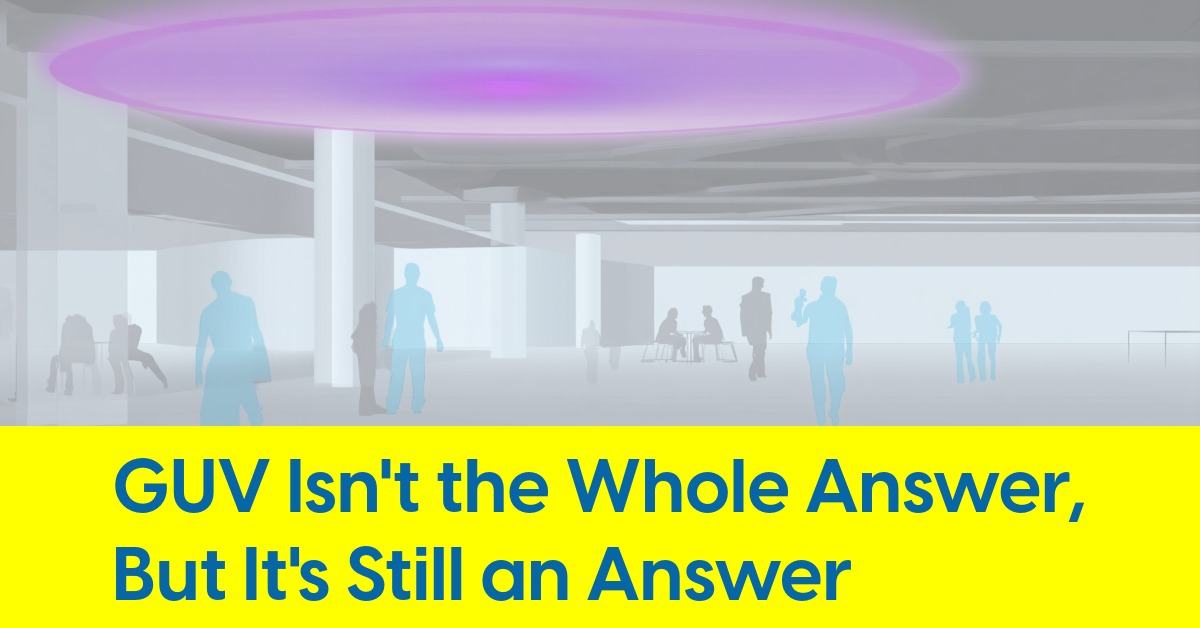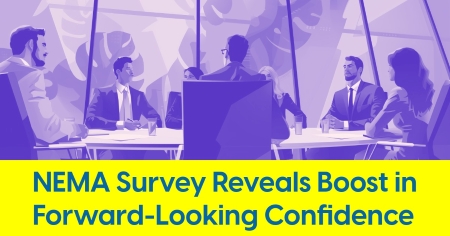December 13, 2023
A.I. is Streamlining Lighting People’s Workflows

A.I.'s emerging impact on lighting design, project management and business
All the Swifties at Inside Lighting World Headquarters buzzed with excitement when Taylor Swift was recently named Time Magazine's 2023 Person of the Year. But amidst our celebrations, our incorrect prediction echoed in the corridors: we thought the award would go not to a person but to a thing, namely Artificial Intelligence (AI). Awarding Person of the Year honors to AI would not have been unprecedented; in 1982, 'The Computer' received this honor, a year before Ronald Reagan.
As Taylor Swift sold out large stadiums throughout much of 2023, AI has made its indelible mark, less glamorously, on both the business world and our personal lives. From automating mundane tasks to pioneering new frontiers in medicine, AI's footprint is expanding rapidly.
We learned that lighting people of all job functions have been evaluating and utilizing AI to accelerate performance and increase accuracy of various business tasks. Engineers are assisted in evaluating complex data. Estimators double-check aspects of project quotations. Marketing people brainstorm with AI to write better copy. From our anecdotal conversations, it seems more common for one or two people on a team to be dabbling or experimenting with AI, rather than having entire teams dedicated to projects aimed at exploiting AI technology.
Where will Lighting see the immediate, significant impacts of AI?
The LED Revolution, marked by the transition from traditional light sources to LED, opened numerous opportunities for lighting professionals. This immediate shift saw the widespread conversion of “low hanging fruit” like high pressure sodium streetlights and metal halide high bays to LED, with downlights and wall packs soon following. In a similar vein, the early impact of AI in the lighting industry may emerge first through software and related applications designed to support these professionals.
Reflecting on the past, we recall the rise of Building Information Modeling (BIM) software like Revit. Once a novel tool used by early adopter techy architects, it is now a staple in the design world. In the context of AI, this leads us to the question: Will AI simply enhance existing design tools, or will it birth entirely new AI-rooted platforms surpassing today's advanced tools? The trajectory of AI's integration into various industries suggests it has the potential to both augment current technologies and introduce groundbreaking platforms.
Much like the early LED fixtures that incorporated LED components into legacy designs, AI seems to be sprinkled into various software tools like a condiment in Photoshop, Salesforce, Slack, and other business software. This emerging trend of integrating AI into diverse fields prompted the Inside Lighting I-Team to specifically investigate its use in lighting applications.
We set out to discover how various lighting-related software platforms are utilizing AI technology. Here's what we learned.
LightStanza
LightStanza, a cloud-based collaborative lighting calculation software, is incorporating artificial intelligence into its lighting design tools. The company's current AI integration primarily revolves around its calculation engine, which employs a hybrid deterministic and stochastic ray-tracing approach. This advanced methodology combines known deterministic lighting estimates, such as the Lumen Method, with custom algorithms. This blend assists designers in creating precise and efficient lighting layouts.
The future roadmap for AI integration in LightStanza is particularly intriguing. A key component involves the potential development of a Chatbot, trained on the IES Lighting Library with user permission. This AI feature would allow designers to easily reference IES standards during application work, streamlining the design process. For instance, a designer could query, “What are the recommended illuminance targets for a Fine Dining area?” and receive accurate, AI-driven guidance.
Additionally, LightStanza is exploring generative design solutions. These solutions could offer initial layout suggestions for common design patterns, such as residential bathroom lighting, allowing designers to refine them further. This approach aims to save time on routine tasks and enhance overall productivity. Another ambitious goal involves replicating typical space designs across a building intelligently for further review, emphasizing the AI's role in augmenting how designers work.
Daniel Glaser from LightStanza highlights the challenges ahead, noting, "There will certainly be challenges when training an AI system on what’s the ground truth for what’s a good or bad design."
Sourcery
Sourcery, a digital platform specializing in product specification and product management, has taken significant strides in integrating artificial intelligence into its operations. The platform's current AI capabilities focus primarily on enhancing user experience by facilitating connections with the right resources. According to Sourcery's description, their AI chat integration is designed to provide precise connection information for appropriate representatives and products. This ensures that users efficiently connect with suitable resources when discovering products. The platform also employs AI for supporting, training, and delivering basic lighting knowledge, which aids users in effectively specifying products.
Looking ahead, Sourcery's leadership sees AI as an indispensable tool not just for facilitating connections, but also for offering guidance on using the Sourcery platform more effectively and for imparting fundamental lighting knowledge. Paul Boken, Sourcery’s founder, encapsulates this vision, stating, "AI is the bridge in Sourcery, smartly connecting specifiers to agents and manufacturers, simplifying the quest for the right contacts, and aiding in crafting precise specifications effortlessly."
Acuity Brands:
Lighting manufacturer Acuity Brands, makers of popular software design tools Visual Lighting and Visual Controls, seems to be taking a measured and deliberate approach to integrating AI into its platforms. The company acknowledges the potential and value AI brings to lighting design applications, while also recognizing industry hesitancy due to concerns about data accuracy and source material.
Currently, Acuity Brands is focusing on leveraging AI for creative tasks in lighting design that provide added value to customers, end-users and employees. While specifics were not shared, the company is dedicated to developing a software solution that refines the visualization and implementation of lighting designs. This development ensures that the AI models employed are trained with accurate and ethically sourced content.
Josh Miller, Manager - Strategic Visualization at Acuity Brands Lighting, emphasizes the company's stance, “As we explore the uncharted territories of AI in lighting design, our priority remains clear: innovate responsibly. We're not just developing a software solution; we're setting a standard for ethical AI use in our industry."
Parspec
Parspec, Inc. has developed a web-based software platform that encompasses three applications: Product Finder, Quoting, and Submittals. These applications integrate advanced AI technologies to enhance the efficiency and accuracy of product selection, quoting, and submission processes in the lighting industry.
The quoting application of Parspec utilizes AI to automatically identify specification-compliant products from the user's preferred manufacturers. This is achieved through natural language processing, which parses the user's design specification to pinpoint applicable product requirements. Subsequently, deep learning models analyze product datasheets from the user's chosen manufacturers, identifying those that meet these requirements.
In the submittal and O&M application, AI is employed to automatically associate current datasheets, installation guides, and warranties with each product in a Bill of Materials (BOM). This process involves web crawlers to find the latest documentation on manufacturer websites, machine learning to match model numbers with datasheets, and computer vision for automating datasheet markup based on the model number in the BOM.
Forest Flager, CEO and Co-Founder of Parspec, highlights the benefits of their AI-powered platform, stating, “Parspec leverages AI to improve the productivity of sales and project management professionals. This enables them to bid more jobs, grow revenue, and improve customer satisfaction… providing a competitive edge in today’s dynamic market.” He also notes the platform's growing adoption, “We are excited that four of the five largest electrical distributors and three of the five largest lighting agencies are benefiting from Parspec’s AI-powered platform.”
OASIS Sales Software
Ingen Software, Inc. has positioned its OASIS Sales Software as a vital tool within the lighting industry, particularly for sales agent personnel. The software's integration of artificial intelligence (AI) is tailored to enhance the sales cycle within this sector. AI in OASIS is primarily utilized for modeling events in the sales cycle, including the prediction of shipments from released orders and income. This implementation of AI assists in providing meta-data that aids in the sales planning process, offering users a more informed and strategic approach to their sales efforts.
Looking beyond its current functionality, Ingen Software's approach to AI integration emphasizes the respect for customer data as intellectual property. AI is leveraged to enable clients to use their data to make more informed decisions. As Brian Howard of Ingen Software explains, "Our policy at Ingen Software is that our customer's data is their intellectual property. Using AI allows us to use their data to help them make better decisions."
Your Lighting Brand: The Lighting Exchange
Your Lighting Brand has developed The Lighting Exchange, a platform offering sales, marketing, and project management tools specifically tailored for lighting professionals.
Currently, The Lighting Exchange employs AI for image recognition and data structuring. With a vast library of over 120,000 product families from more than 1800 manufacturers, manual categorization of products into standardized categories is a daunting task. AI, particularly image-recognition algorithms that learn from a trained data set, plays a critical role in reducing manual entry. This AI application significantly improves processing time by automatically categorizing products.
Another key area of AI integration is in data extraction and organization. The Lighting Exchange uses AI to translate and generalize data from different manufacturers, ensuring a consistent user experience. This approach makes lighting taxonomies, attributes, and product specifications more readable and consistent. As a result, it facilitates easier communication among specifiers and lighting agencies, using the same terminology and thereby improving workflows.
Jonathan Ayala, Co-Founder & Principal of Your Lighting Brand and The Lighting Exchange, underscores the impact of AI in the industry, stating, "Artificial intelligence catalyzes change and will empower communities by unlocking innovation, challenging our workflows, and fostering inclusive progress. If we can utilize AI to strengthen our community, bringing all stakeholders within our great industry together, then we will have maximized AI's positive potential.”
In the lighting industry, AI's integration into software tools might be akin to a hit Taylor Swift song – it resonates with its audience, brings innovative rhythm to mundane workdays, and leaves us anticipating what's next. This exploration into AI's role in various lighting software platforms shows its potential to continue innovate and improve the workflow of lighting people everywhere.










